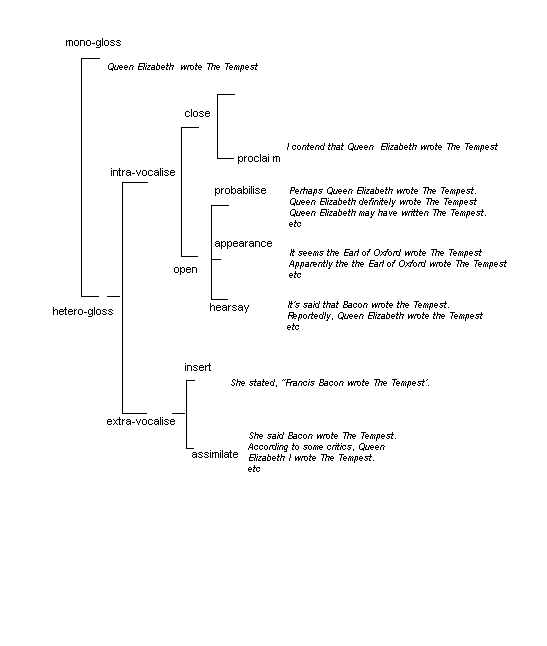


The resources which I include under `open' can be understood as acting to `open up' the heteroglossic dialogue, to extend the text's potential for construing heteroglossic diversity. These include probability, appearance (reality phase) and hearsay.
The semantics of probability and appearance (reality phase) are widely referenced in the literature. As discussed above, under the heteroglossic perspective, meanings such as `I think ...', `probably', `It seems...', `Apparently ...' etc are not construed as evasions of truth values but rather as resources by which the speaker `opens up' their potential for interacting with the heteroglossic diversity.
The second option under `open', `appearance', serves a similar rhetorical function to probabilise. It `opens up' the potential for negotiating the heteroglossic diversity by reference not to probability but by foregrounding and making explicit the evidential process upon which all propositions rely.
The final option under `open' - `hearsay' - entertains heteroglossic diversity in a similar way, although its semantics perhaps require some additional explication. Under `hearsay' the possibility of heteroglossic alternation remains open because the utterance is marked as based on what some unspecified person said. In many languages, of course, hearsay is coded grammatically rather than lexically - hearsay is an integral part of the MODALITY system. Within English and similar languages, hearsay is coded by means of wordings which derive from the grammar of verbal projection but in which the projecting sayer is absent or cannot be specified - thus, `Reportedly, she viewed the papers', `Her alleged viewing of the documents.', `It's said she viewed the papers.', `I hear she viewed the documents.'. The semantic consequence of such structures is not to introduce an alternative voice into the text and hence `hearsay' is included within `intra-vocalise' and not within `extra-vocalise'. Rather, it functions to indicate that the meanings qualified by the hearsay are negotiable in heteroglossic terms.

Figure 4: ENGAGEMENT - open versus close
There are a number of grammatical grounds for, firstly, identifying `hearsay' as a distinct discourse semantic category separate from the extra-vocalisation categories which it superficially resembles and, secondly, for aligning it in the semantics with `probability' and `appearance'.